|
|
|
|
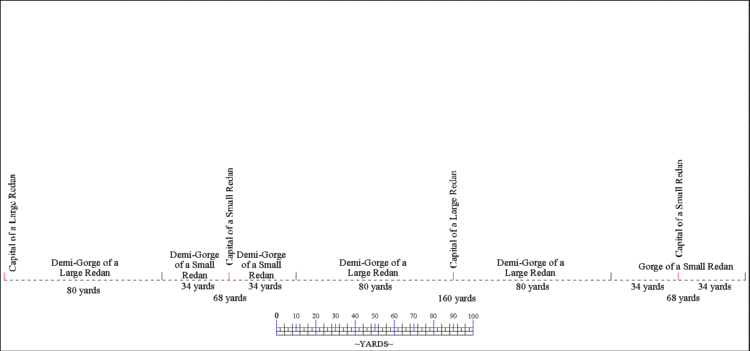 |
|
|
Draw a right line of any length. This line will be the interior
boundary line that includes the gorges and re-entering angles of the tenaille
lines great and small redans. |
|
|
|
|
|
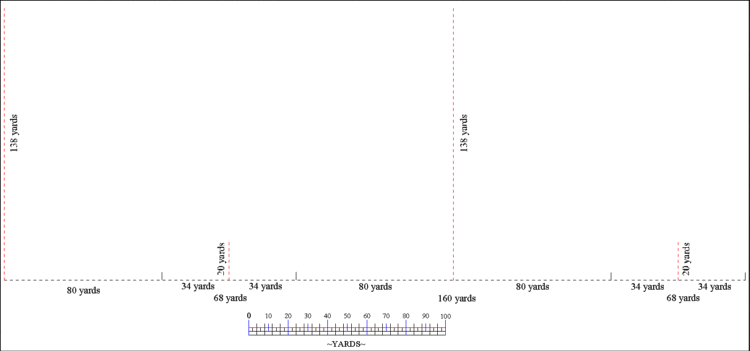 |
|
|
In the same motion, divide the boundary line by locating the positions
of the redan's capitals and limits of the gorges. The demi-gorge of each
great redan will be 80 yards long; the full gorge 160 yards long; the demi-gorge
of each small redan will be 34 yards long, the full gorge 68 yards long.
Capitals of the great and small redans will, naturally, be located where
two demi-gorges meet of the appropriate length meet.
|
|
|
|
|
|
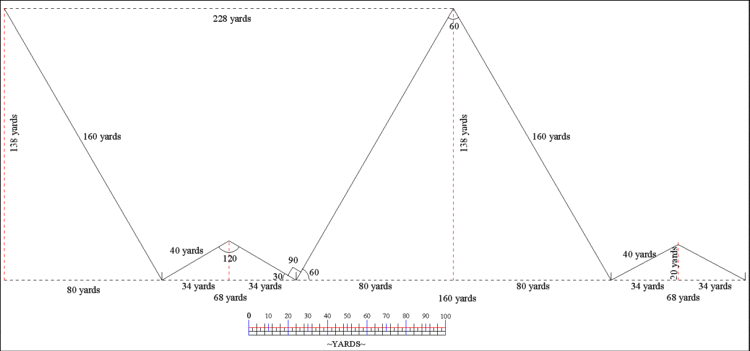 |
|
|
Produce the capitals of the redans toward the exterior (or engaged
side) of the interior boundary line. Capitals of the great redans should
be 138 yards long; capitals of the small redans should be 20 yards long.
These distances between points where the faces of the redans will be drawn
set up a very nice defensive relationship between the faces of the small
and great redans while giving the salients of the great redans sufficient
open space for its defenders to conduct a good defense.
|
|
|
|
|
|
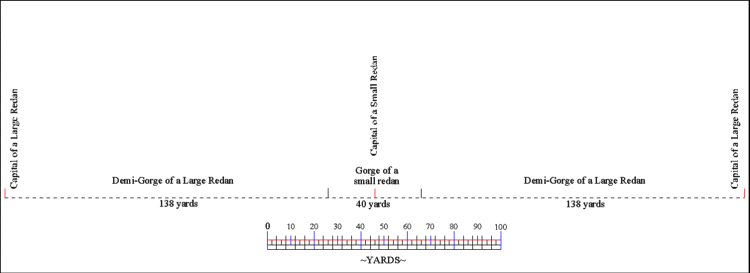 |
|
|
Produce right lines from the exterior extremities of the redan
capitals to the locating points of division on the interior boundary that
mark the limits of the redan gorges. This completes the trace of the alternating
great and small redan tenaille line. Note that the salient angles of the
great redans measure 60 degrees; salients of the small redans measure 120
degrees, the same angular relationship found in the alternating 60 and 120
degree tenaille line. This relationship insures that the faces of the small
redans are perpendicular to the faces of the large redans so that troops
lining the interior crests of the small redans can adequately defend the
faces of the large redans with an effective enfilading fire.
This trace placed the capitals of the great redans 228 yards apart;
the development of the interior crest would total 400 yards. 800 troops would
be required to adequately man the interior crest when deployed in two ranks
along the interior crest, far more than any of the other tenaille traces
described in other period engineering manuals.
|
|
|
|
|
|
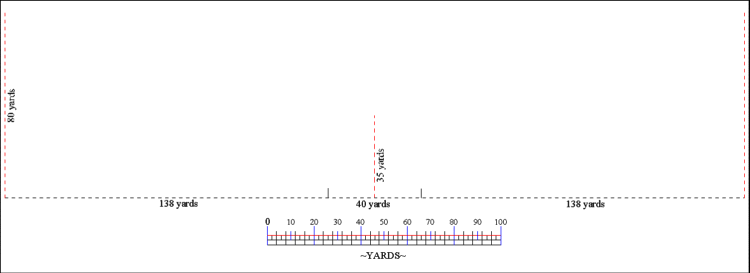 |
|
|
Mahan did offer a much more plausible and effective alternative
that decreased the depth of the tenaille line and corrected the worst problems
inherent to the first great and small redan tenaille line. In this trace
the great redans were, so to speak, turned on their sides so that the 138
yard long capital became a 138 yard long demi-gorge. The small redans were
given a 40 yard long gorge.
Capitals of the great redans were then made 80 yards long and
the capitals of the small redans made 35 yards long to preserve the proportions
of half-redans of the first great and small redan tenaille line. |
|
|
|
|
|
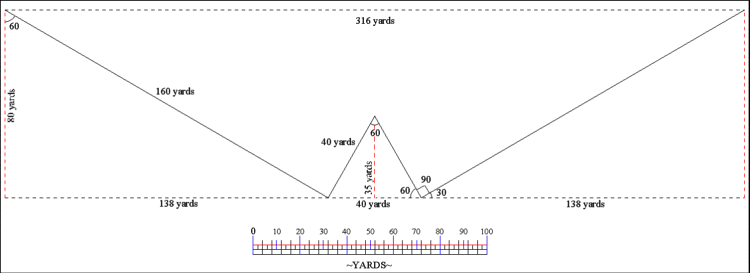 |
|
|
Measures of the salient angles of this trace's redans were opposite
those of the first alternative: great redan salients measured 120 degrees,
small redan salients measured 60 degrees; these proportions once again insured
that the faces of the small redans would be perpendicular to the faces of
the great redans. Faces of the great redans were still 160 yards long while
the faces of the small redans would retain their 40 yard length. But this
trace placed the capitals of the great redans 316 yards apart, meaning that
the same number of troops (800) could defend a lateral front that was 88
yards longer than the previous great and small redan tenaille trace. |
|
|
|
|